Blooms at Home – A Guide on Decorating with Botanicals

If you want to reconnect your home with nature, what stops you from adding a little life to your home décor? Botanicals are the perfect answer to your worries. A timeless, lush green, an artistic addition to your furniture and interior, keeps the environment fresh and calm.
Add a hint of calmness and transform the dullness of your interior into something vibrant and fresh. We have selected the best botanicals, from vibrant flowers to green leafy plants, to add beauty to your home décor. Let's take a quick review on how to set up your home decor with botanicals, floral arrangements, and botanic-themed prints;
Timeless Beauty – The Greens
When discussing botanical home décor, your mind automatically shifts to greenery, leaving a sense of freshness and relaxation. There are different types of plants that you can add to your kitchen, living rooms, gallery, entrances, bathrooms, and bedrooms.
Plant Potters
The best idea is to place plant potters of different sizes that match the available space in the area where you want to add them. They create a sense of completion and refresh you even just by looking at them; the key is to water them adequately and take care of them to keep them as fresh as new!
Spillers and Hanging Plants
Spillers or hanging plants and bushes add a timeless style to your home décor, enhancing the bookshelves and ceilings or giving the illusion of making any vertical angle small.
Small Pots and Succulents
Small plants and succulents are some of the most adorable additions to home décor; they add a pinch of sweetness, which we usually miss out on while decorating our homes. You can place these tiny jars beside the windows, above the tables, in the bathroom, or nail them on the walls.
Aesthetic Floral Arrangements
Who doesn't like an aesthetically floral arrangement in their interior? Create an impactful aura by placing flowers on the dining tables, entrances, standing vases, and wherever necessary.
You can freely experiment with combinations of colour, ranging from vibrant to dull and dry, dramatic to delicate, and whatnot! The whole point is to add a pinch of delicacy and elegance to your home décor, and the best part is that you can change the flower arrangement occasionally.
Switch to Botanical and Floral Prints
Add the beauty of nature to your kitchen and living area with botanical and floral printed rugs and cushions! It is a perfect way to freshen the space with beautiful, eye-catching floral prints that add depth and texture to your home décor.
You can even switch to botanical printed throws, pillow covers, sheets, and wall-hanging scenery if you still decide to add fresh plant arrangements.

Botanical Themed Interior
If you want to spend the evening in a fresher environment, setting up a botanical-themed outdoor setting is vital. Extend you're the style of your patio by picking the most stylish botanical patterns that complement your furniture.
You can place lovely botanical rugs with matching chairs and stools. Doesn't breathing in fresh air after a hectic day at work sound refreshing?
Maintain A Balance With Natural Elements
Another idea is to add natural elements like stones, wood, and gems to your interior in their natural state or polished versions; they can create impact however you arrange them!
You can select furniture made from 100% original wood to give a sense of natural existence in your home décor or add absolute stone countertops; the possibilities are infinite when decorating with stones! Another idea is adding printed botanical rugs on the foot space combined with rocks so well that they refresh your soul and mind.

Intimate Indoor Gardens
What is better than having your own sweet, intimate indoor garden? Where can you grow your favourite vegetables and fruits with the most sweet-smelling flowers or simple yet impactful leafy greens?
Transform the dull corners into small indoor gardens and enhance your home décor style with botanicals. You can experiment with different plants, lighting, pots, artificial decorations, and whatnot!
Conclusion
Add to the versatility and uniqueness of your home décor through fresh botanical arrangements or botanical-themed prints. Endless opportunities await you when designing the interior with botanicals: green leaves, vibrant or delicate flowers, spillers, or even an illusion of plants through botanical prints in rugs, cushions and sheets.
What stops you from letting out the hidden botanist and redesigning your home, bringing the essence of nature back? We hope this blog proves to be your perfect guide and partner in giving you the best ideas to add nature to your home decor.
Transform Your Home with Botanicals and Rugs: A Perfect Blend of Nature and Style
The rise of botanicals and rugs in home decor
In the ever-evolving world of interior design, there is a growing trend that has captivated homeowners and design enthusiasts alike - the harmonious blend of botanicals and rugs. As we seek to create spaces that are not only visually stunning but also deeply connected to the natural world, these two elements have emerged as the perfect pairing, transforming homes into sanctuaries of beauty and serenity.
Over the past few years, we have witnessed a surge in the popularity of indoor plants, from lush, trailing vines to vibrant, leafy foliage. Homeowners have embraced the idea of bringing the outdoors in, recognising the myriad benefits that these living, breathing elements can bring to our living spaces. Simultaneously, the timeless allure of rugs has endured, with homeowners seeking to anchor their rooms with these versatile and visually captivating textiles.

The benefits of incorporating botanicals in your home
Incorporating botanicals into your home can have a profound impact on your overall well-being and the ambiance of your living spaces. These living, breathing elements not only add a touch of natural beauty but also offer a wealth of practical benefits:
-
Improved air quality: Indoor plants are natural air purifiers, effectively removing harmful toxins and pollutants from the air, creating a healthier environment for you and your family.
-
Stress reduction: Studies have shown that the presence of plants can have a calming effect, reducing stress levels and promoting a sense of relaxation and wellbeing.
-
Increased productivity: Numerous studies have demonstrated that the presence of plants in the workplace can enhance focus, creativity, and overall productivity.
-
Enhanced mood: Surrounded by the lush greenery and vibrant colours of botanicals, you can experience a boost in mood and a heightened sense of positivity.
Choosing the right botanicals for your space
When it comes to selecting the perfect botanicals for your home, it's essential to consider the unique characteristics and needs of each plant. Factors such as light exposure, humidity levels, and available space will all play a crucial role in determining the best choices for your living environment.
Some popular and low-maintenance options include:
- Succulents: These hardy, drought-resistant plants thrive in a variety of conditions and add a touch of modern elegance to any room.
- Philodendrons: With their lush, trailing leaves, philodendrons can create a stunning focal point and add a sense of lush, tropical vibes to your space.
- Snake plants: Also known as mother-in-law's tongue, these resilient plants are perfect for beginners and can tolerate a range of lighting conditions.
- Pothos: With their cascading vines and vibrant green leaves, pothos plants are a versatile and low-maintenance choice.
How to care for your indoor plants
Maintaining the health and longevity of your indoor plants requires a bit of care and attention, but it's a rewarding process that can truly enhance the ambiance of your home. Here are some tips to help you keep your botanicals thriving:
-
Watering: Establish a consistent watering routine, adjusting the frequency based on the plant's specific needs. Avoid overwatering, as this can lead to root rot.
-
Lighting: Ensure your plants receive the appropriate amount of light, whether it's direct sunlight or indirect, filtered light, depending on their requirements.
-
Fertilising: Use a balanced, water-soluble fertiliser to provide your plants with the necessary nutrients for healthy growth.
-
Pruning: Regular pruning can help maintain the shape and appearance of your plants, while also encouraging new growth.
-
Repotting: As your plants grow, they may need to be repotted to accommodate their expanding root systems and provide them with fresh soil.
Enhancing your home with rugs: a timeless addition
Alongside the vibrant presence of botanicals, rugs have long been a staple in interior design, offering a versatile and timeless way to anchor a room, add texture, and infuse it with personality. From classic woven patterns to bold, abstract designs, the right rug can truly elevate the overall aesthetic of your living spaces.
Rugs not only serve as a functional element, providing comfort and warmth underfoot, but they also have the power to define the visual flow and cohesion of a room. By carefully selecting rugs that complement the botanicals in your home, you can create a harmonious and visually striking environment that seamlessly blends nature and style.
Types of rugs that complement botanicals
When it comes to pairing rugs with botanicals, there are several styles and materials that can work beautifully together. Here are some options to consider:
-
Natural Fibre Rugs: Jute, sisal, and seagrass rugs offer a natural, earthy aesthetic that pairs perfectly with the lush greenery of indoor plants.
-
Vintage or Distressed Rugs: Vintage-inspired or distressed rugs with muted, organic hues can create a warm and inviting ambiance that complements the botanical elements.
-
Floral or Botanical-Inspired Rugs: Rugs featuring delicate floral patterns or botanical motifs can directly echo the living plants in your space, creating a cohesive and visually striking look.
-
Neutral Solid Rugs: Solid-coloured rugs in neutral tones, such as beige, grey, or ivory, can provide a versatile foundation that allows the botanicals to take centre stage.

Tips for selecting the perfect rug for your home
When choosing the right rug for your home, there are several factors to consider to ensure a seamless integration with your botanical elements:
-
Size and Scale: Measure your space carefully and select a rug size that is proportional to the room, allowing for the botanicals to be highlighted without being overwhelmed.
-
Colour and Pattern: Consider the dominant hues and patterns in your botanicals, and choose a rug that complements or contrasts them in a harmonious way.
-
Texture and Material: Opt for natural fibre rugs or those with a subtle, textural design to create a cohesive, nature-inspired look.
-
Durability: Depending on the high-traffic areas in your home, select a rug with a durable construction that can withstand regular use without compromising its appearance.
-
Placement: Strategically position your rug to anchor the botanical elements, creating a visually balanced and cohesive arrangement.
Styling ideas for incorporating botanicals and rugs together
Blending botanicals and rugs in your home can be a truly transformative experience, allowing you to create a space that is both visually stunning and deeply connected to the natural world. Here are some styling ideas to inspire you:
-
Layered Arrangements: Incorporate a mix of potted plants, trailing vines, and botanical-inspired accents, layering them atop a natural fibre rug to create a lush, immersive environment.
-
Rug as a Focal Point: Position a bold, patterned rug as the central focus of the room, then arrange your botanicals around it to draw the eye and create a harmonious composition.
-
Rug as a Grounding Element: Use a neutral, solid-coloured rug to anchor your botanical displays, allowing the plants to take centre stage and create a serene, nature-inspired ambiance.
-
Complementary Colours: Select a rug with colours that complement the hues of your botanicals, creating a cohesive and visually appealing look.
-
Textural Contrast: Juxtapose the smooth, glossy leaves of your plants with the natural, textured fibre of your rug to add depth and visual interest to the space.
Botanical Decor Ideas: Bringing Nature Indoors
Transform your living spaces with botanical decor ideas that breathe life into your home. Incorporate lush green plants of various sizes to create a vibrant, natural atmosphere. Consider adding botanical prints to your walls or throw pillows for a subtle nod to nature. Use natural materials like rattan, jute, or bamboo in your furniture and accessories to complement the botanical theme. Don't forget to include terrariums or hanging planters for a unique touch of greenery in unexpected places.

Botanical Decor Living Room: Creating a Natural Oasis
Turn your living room into a serene retreat with botanical-inspired decor. Start with a large statement plant like a fiddle leaf fig or monstera to anchor the space. Incorporate botanical-print curtains or an area rug to tie the theme together. Add natural textures through woven baskets, wooden side tables, or a jute pouf. Consider a living wall or a collection of framed pressed leaves for a stunning focal point. Enhance the ambiance with nature-inspired scents using essential oils or scented candles.

Botanical Decor: Embracing the Beauty of Nature
Infuse your home with the refreshing essence of botanical decor. This versatile style combines natural elements with modern design for a harmonious living environment. Incorporate a variety of plant species to add depth and interest to your spaces. Use botanical-inspired textiles for upholstery, cushions, or bedding to reinforce the theme. Consider adding nature-themed artwork or sculptures to complement your live plants. Remember, botanical decor is about creating a balanced, organic feel throughout your home.

Botanical Decor Bedroom: Cultivating a Restful Retreat
Create a tranquil sleep sanctuary with botanical decor in your bedroom. Start with calming green hues on your walls or bedding to set a soothing tone. Incorporate a variety of plants that thrive in low-light conditions, such as snake plants or pothos. Add a botanical-print headboard or wallpaper for a striking feature wall. Use natural fibre bedding and curtains to enhance the organic feel. Consider a small indoor water feature for added relaxation and to complement the botanical theme.
Botanical Wall Decor: Vertical Gardens and Natural Art
Elevate your walls with stunning botanical decor that brings the outdoors in. Create a living wall with a variety of air plants, ferns, and trailing vines for a dramatic effect. Alternatively, arrange a gallery wall of botanical prints, pressed flowers, or leaf specimens for a more subtle approach. Consider 3D wall art made from natural materials like driftwood or preserved moss. Don't forget to include mirrors with plant reflections to amplify the greenery and create the illusion of more space.

Botanical Room Decor: Immersing Spaces in Nature
Transform any room into a lush paradise with botanical decor elements. Incorporate plant-inspired colour palettes with shades of green, brown, and earthy neutrals. Use botanical-print wallpaper on an accent wall for a bold statement. Add natural fibre rugs and wooden furniture to complement the organic theme. Display a collection of terrariums or air plants on shelves or hanging from the ceiling. Remember to include nature-inspired accessories like leaf-shaped bowls or floral-patterned throw pillows to complete the look.

Botanical Bathroom Decor: Spa-Like Serenity at Home
Create a refreshing oasis in your bathroom with botanical-inspired decor. Choose moisture-loving plants like ferns, orchids, or bamboo to thrive in the humid environment. Incorporate botanical-print shower curtains or towels for a cohesive look. Add natural elements like a wooden bath mat or stone soap dishes. Consider a living wall of air plants or a large potted plant for a striking focal point. Use essential oils or reed diffusers with nature-inspired scents to enhance the spa-like atmosphere.
Botanical Home Decor: Cohesive Nature-Inspired Design
Embrace a holistic approach to botanical home decor by incorporating natural elements throughout your living spaces. Use a consistent colour palette inspired by nature, featuring greens, browns, and neutrals. Incorporate botanical prints in various forms, from wallpaper to artwork and textiles. Add natural textures through woven baskets, wooden furniture, and stone accents. Create plant vignettes in each room to maintain the theme. Remember to consider lighting that mimics natural sunlight to keep your plants thriving and enhance the overall ambiance.

Botanical Classroom Decor: Nurturing Learning in Nature
Transform your classroom into an inspiring, nature-filled space with botanical decor. Create a reading nook surrounded by plants for a calming study area. Use botanical-themed educational posters to combine learning with decor. Incorporate plant life cycles or leaf identification activities into your displays. Add natural materials like pinecones, leaves, or branches to sensory tables. Consider a class terrarium project to teach responsibility and science concepts. Use green and natural tones in your colour scheme to promote a sense of tranquillity and focus.

Botanical Kitchen Decor: Fresh and Functional Design
Bring the freshness of nature into your kitchen with botanical-inspired decor. Start an indoor herb garden on your windowsill for both decoration and culinary use. Incorporate botanical-print tea towels, oven mitts, or tablecloths for a cohesive theme. Display wooden cutting boards and woven baskets to add natural textures. Consider open shelving to showcase plants alongside your dishes and cookware. Add a botanical-themed backsplash or wallpaper for a bold statement. Don't forget to include air-purifying plants like spider plants or aloe vera to improve air quality while cooking.

Botanical Room Makeover: Transforming Spaces with Nature
Revitalise any room with a botanical-themed makeover that brings the outdoors in. Start by painting walls in nature-inspired hues or adding botanical wallpaper for instant impact. Introduce a variety of plants in different sizes and textures to create depth and interest. Incorporate natural materials in your furniture and accessories, such as rattan chairs or jute rugs. Add botanical prints in artwork, cushions, or curtains to reinforce the theme. Consider creating a focal point with a large statement plant or a living wall. Remember to include proper lighting to support plant growth and create a warm, inviting atmosphere.
FAQs
What is botanical interior design?
Botanical interior design incorporates natural elements, especially plants and floral motifs, to create a fresh, organic atmosphere in indoor spaces.
How to decorate a spiritual home?
Decorate a spiritual home by incorporating natural materials, soft lighting, meaningful symbols, and creating clutter-free spaces for meditation and reflection.
How to decorate your home with greenery?
Enhance your home with greenery by adding potted plants, hanging baskets, living walls, and botanical prints to bring nature indoors.
What to pair with botanical prints?
Pair botanical prints with natural textures like wood and rattan, earthy colors, and minimalist furniture to create a balanced, nature-inspired look.
What is interior design with plants called?
Interior design with plants is often referred to as biophilic design or botanical interior design.
What interior design style uses plants?
Several styles incorporate plants, including Bohemian, Tropical, Scandinavian, and Modern Organic interior design.
What is botanical art style?
Botanical art style focuses on accurate, detailed representations of plants, often used for scientific illustration and decorative purposes.
What style is botanical?
Botanical style emphasizes natural elements, plant motifs, and organic textures to create a fresh, nature-inspired aesthetic.
What is a botanical design?
Botanical design incorporates plant-inspired patterns, natural materials, and actual plants to create a connection with nature in interior spaces.
What are botanical patterns?
Botanical patterns are designs featuring plant-based motifs such as leaves, flowers, and vines, often used in textiles and wallpapers.
How can I make my house look Zen?
Create a Zen-like atmosphere by using neutral colors, natural materials, minimalist furniture, and incorporating elements of nature and soft lighting.
How to make a sacred home?
Create a sacred home by designating a meditation space, using meaningful objects, incorporating natural elements, and maintaining a clutter-free environment.
How do I make my home more spiritual?
Enhance your home's spirituality by adding sacred symbols, creating an altar space, using aromatherapy, and incorporating natural light and plants.
What is a biophilic interior?
A biophilic interior is a design approach that connects occupants with nature through the use of natural materials, plants, natural light, and organic forms.
What is botanical floral design?
Botanical floral design focuses on creating natural-looking arrangements that mimic plants' growth patterns in their natural habitats.
What is botanical imagery?
Botanical imagery refers to visual representations of plants, including detailed illustrations, photographs, and artistic interpretations of flora.
What is holistic interior design?
Holistic interior design considers the physical, mental, and emotional well-being of occupants, often incorporating natural elements and sustainable practices.
What are botanical items?
Botanical items include plant-based decor such as pressed flowers, leaf prints, terrariums, and other nature-inspired decorative objects.
Are botanical prints still in style?
Yes, botanical prints remain popular, offering a timeless and versatile way to bring natural elements into interior design.
What is a botanical look?
A botanical look incorporates plant-inspired elements, natural textures, and earthy colors to create a fresh, nature-connected aesthetic.
What is a botanic design?
Botanic design focuses on incorporating plant life and plant-inspired elements into interior spaces, often with an emphasis on scientific accuracy.
What are the characteristics of botanical design?
Key characteristics include use of plants, nature-inspired patterns, organic textures, earthy color palettes, and a focus on bringing the outdoors inside.
What is mindful interior design?
Mindful interior design focuses on creating spaces that promote well-being, consciousness, and connection with one's surroundings, often incorporating natural elements.
What is earthy interiors?
Earthy interiors use natural materials, organic textures, and a warm color palette inspired by nature to create a grounded, comforting atmosphere.
What is nature theme interior design?
Nature theme interior design incorporates elements from the natural world, such as plants, natural materials, organic shapes, and nature-inspired colors.
What is botanical style floral design?
Botanical style floral design creates arrangements that mimic natural plant growth, often focusing on seasonality and native species.
What botanical art means?
Botanical art refers to accurate depictions of plant life, often used for scientific documentation and aesthetic appreciation.
What makes something a botanical?
A botanical is anything relating to plants, including scientific studies, artistic representations, or plant-derived products.
What is a botanical sketch?
A botanical sketch is a detailed drawing of a plant or plant parts, often used for scientific documentation or artistic purposes.
What are botanical structures?
Botanical structures are the various parts of plants, such as roots, stems, leaves, flowers, and fruits, often studied in botany.
What is the meaning of botanical room?
A botanical room is a space designed to showcase and celebrate plant life, often featuring live plants, botanical prints, and nature-inspired decor.
Why is it called botanical?
The term "botanical" comes from the Greek word "botanikos," meaning "of herbs" or "of plants," referring to anything related to plant life.
What are botanical materials?
Botanical materials are substances derived from plants, including fibers, oils, and extracts used in various industries.
What is the difference between botanic and Botanical?
"Botanic" and "Botanical" are often used interchangeably, but "botanic" typically refers to gardens or institutions, while "botanical" is a broader term for anything plant-related.
What is earthy interior design?
Earthy interior design uses natural materials, organic textures, and nature-inspired colors to create a grounded, comfortable living space.

What is organic decoration?
Organic decoration incorporates natural materials, curved lines, and nature-inspired elements to create a harmonious, flowing aesthetic.
What is natural style interior design?
Natural style interior design focuses on creating spaces that connect with nature through the use of organic materials, earthy colors, and biophilic elements.
What is a botanical material?
A botanical material is any substance derived from plants, such as fibers, oils, or extracts, used in various applications including design and manufacturing.
What does Botanical mean in art?
In art, "botanical" refers to accurate depictions of plants, often used for scientific illustration or decorative purposes.
What is the purpose of botanical drawing?
Botanical drawing serves to accurately document plant species for scientific study and to create aesthetically pleasing plant-based artwork.
What is a botanical image?
A botanical image is a visual representation of a plant or plant parts, often detailed and scientifically accurate.
What is interior design with plants called?
Interior design with plants is often referred to as biophilic design or botanical interior design.
What interior design style uses plants?
Several styles incorporate plants, including Bohemian, Tropical, Scandinavian, and Modern Organic interior design.
What style is botanical?
Botanical style emphasizes natural elements, plant motifs, and organic textures to create a fresh, nature-inspired aesthetic.
What is a botanical design?
Botanical design incorporates plant-inspired patterns, natural materials, and actual plants to create a connection with nature in interior spaces.
How can I make my home more spiritual?
Enhance your home's spirituality by adding sacred symbols, creating an altar space, using aromatherapy, and incorporating natural light and plants.
How do I make my house feel Zen?
Create a Zen atmosphere by using neutral colors, natural materials, minimalist furniture, and incorporating elements of nature and soft lighting.
How to make a sacred home?
Create a sacred home by designating a meditation space, using meaningful objects, incorporating natural elements, and maintaining a clutter-free environment.
How do I make my house a holy place?
Transform your house into a holy place by creating a dedicated sacred space, using religious symbols, incorporating natural elements, and maintaining a peaceful atmosphere.
How to incorporate plants into decor?
Incorporate plants into decor by using hanging planters, vertical gardens, statement potted plants, and botanical prints throughout your space.
How do you bring nature into your home decor?
Bring nature into your home decor by using natural materials, adding indoor plants, incorporating nature-inspired artwork, and using organic textures and earthy colors.
What is the power of plants in interior design?
Plants in interior design can improve air quality, reduce stress, increase productivity, and create a more vibrant, lively atmosphere.
How do I incorporate green into my home decor?
Incorporate green into your home decor through live plants, green-hued textiles, botanical prints, and nature-inspired accessories.
What is botanical art style?
Botanical art style focuses on accurate, detailed representations of plants, often used for scientific illustration and decorative purposes.
What are botanical patterns?
Botanical patterns are designs featuring plant-based motifs such as leaves, flowers, and vines, often used in textiles and wallpapers.
What are the characteristics of botanical design?
Key characteristics include use of plants, nature-inspired patterns, organic textures, earthy color palettes, and a focus on bringing the outdoors inside.
What is a botanical look?
A botanical look incorporates plant-inspired elements, natural textures, and earthy colors to create a fresh, nature-connected aesthetic.
What is a botanic design?
Botanic design focuses on incorporating plant life and plant-inspired elements into interior spaces, often with an emphasis on scientific accuracy.
What is a biophilic interior?
A biophilic interior is a design approach that connects occupants with nature through the use of natural materials, plants, natural light, and organic forms.
What is botanical floral design?
Botanical floral design focuses on creating natural-looking arrangements that mimic plants' growth patterns in their natural habitats.
What are botanical items?
Botanical items include plant-based decor such as pressed flowers, leaf prints, terrariums, and other nature-inspired decorative objects.
Are botanical prints still in style?
Yes, botanical prints remain popular, offering a timeless and versatile way to bring natural elements into interior design.
What is holistic interior design?
Holistic interior design considers the physical, mental, and emotional well-being of occupants, often incorporating natural elements and sustainable practices.
What makes something a botanical?
A botanical is anything relating to plants, including scientific studies, artistic representations, or plant-derived products.
What are botanical structures?
Botanical structures are the various parts of plants, such as roots, stems, leaves, flowers, and fruits, often studied in botany.
What is botanical imagery?
Botanical imagery refers to visual representations of plants, including detailed illustrations, photographs, and artistic interpretations of flora.
What is earthy interior design called?
Earthy interior design is often referred to as organic, natural, or rustic interior design, emphasizing the use of natural materials and earthy colors.
What is it called to decorate with plants?
Decorating with plants is commonly referred to as biophilic design. This approach integrates natural elements into interior spaces, creating a harmonious connection between nature and the built environment. Biophilic design not only enhances aesthetics but also promotes well-being and productivity by bringing the outdoors inside.
What do you do with botanicals?
Botanicals offer versatile decorative options. You can frame pressed flowers or leaves for wall art, use them in potpourri for natural fragrance, or incorporate them into DIY candles. Dried botanicals make excellent centerpieces or can be used to create unique garlands. Fresh botanicals can be displayed in vases or used to make natural dyes for fabrics.
What to avoid when decorating?
When decorating, avoid overcrowding spaces with too many elements. Steer clear of matching everything perfectly, as it can make a room feel flat and uninspired. Don't ignore proper lighting, as it's crucial for ambiance. Avoid neglecting scale and proportion when choosing furniture and decor items. Lastly, don't forget about functionality in pursuit of aesthetics.
What is decoration with flowers called?
Decoration with flowers is known as floral design or floristry. This art form involves arranging flowers and other plant materials to create aesthetically pleasing compositions. Floral design encompasses various styles, from traditional bouquets to modern installations, and is used in both everyday decor and special events like weddings.
What is a fancy word for decorate?
A sophisticated term for decorate is embellish. This word implies adding ornamental details to enhance beauty or elegance. Other refined alternatives include adorn, garnish, or beautify. These terms suggest a thoughtful and artistic approach to improving the appearance of a space or object.
Why are botanicals trending?
Botanicals are trending due to a growing desire for natural elements in our increasingly digital world. They offer a connection to nature, promoting well-being and stress reduction. Botanicals also provide versatile design options, from subtle accents to bold statement pieces. The trend aligns with eco-friendly lifestyles and the pursuit of sustainable, organic aesthetics in interior design.
Are flowers considered botanicals?
Yes, flowers are indeed considered botanicals. The term botanical encompasses all plant life, including flowers, leaves, stems, and roots. In decorative contexts, botanicals often refer to plant-based design elements, which prominently feature flowers alongside other plant parts. This broad category allows for diverse and creative use of plant materials in art, design, and decor.
What patterns go well with florals?
Floral patterns pair well with various complementary designs. Stripes offer a classic contrast, balancing the organic shapes of florals. Geometric patterns create an interesting juxtaposition, adding modern flair. Polka dots can complement florals for a playful look. For a more subtle combination, textured solids or small-scale prints in coordinating colors work beautifully with floral patterns.
What is the most important element in floral design?
The most important element in floral design is balance. This principle ensures that the arrangement is visually pleasing and stable. Balance involves considering the color, texture, and form of each element to create a harmonious composition. It also includes the thoughtful distribution of visual weight within the arrangement, whether symmetrical or asymmetrical.
Can you decorate with flowers?
Absolutely! Flowers are versatile decorative elements. Use fresh bouquets as centerpieces or to add color to any room. Dried flowers offer long-lasting beauty and can be incorporated into wreaths or wall hangings. Pressed flowers make unique framed art. Consider using floral-patterned textiles for a subtle touch or create a statement wall with floral wallpaper for a bold look.
What is a classy word for creative?
A refined synonym for creative is innovative. This term suggests not just creativity, but also the ability to introduce new ideas or methods. Other elegant alternatives include ingenious, visionary, or avant-garde. These words convey a sense of originality and sophistication in creative endeavors.
What is a word for decorated beautifully?
A word that captures the essence of being decorated beautifully is resplendent. This term implies a magnificent, brilliant appearance that commands attention. Other expressive options include ornate, suggesting elaborate and elegant decoration, or sumptuous, which conveys a sense of luxurious and rich embellishment in decor.
Related Blog Posts
Related Rug Collections




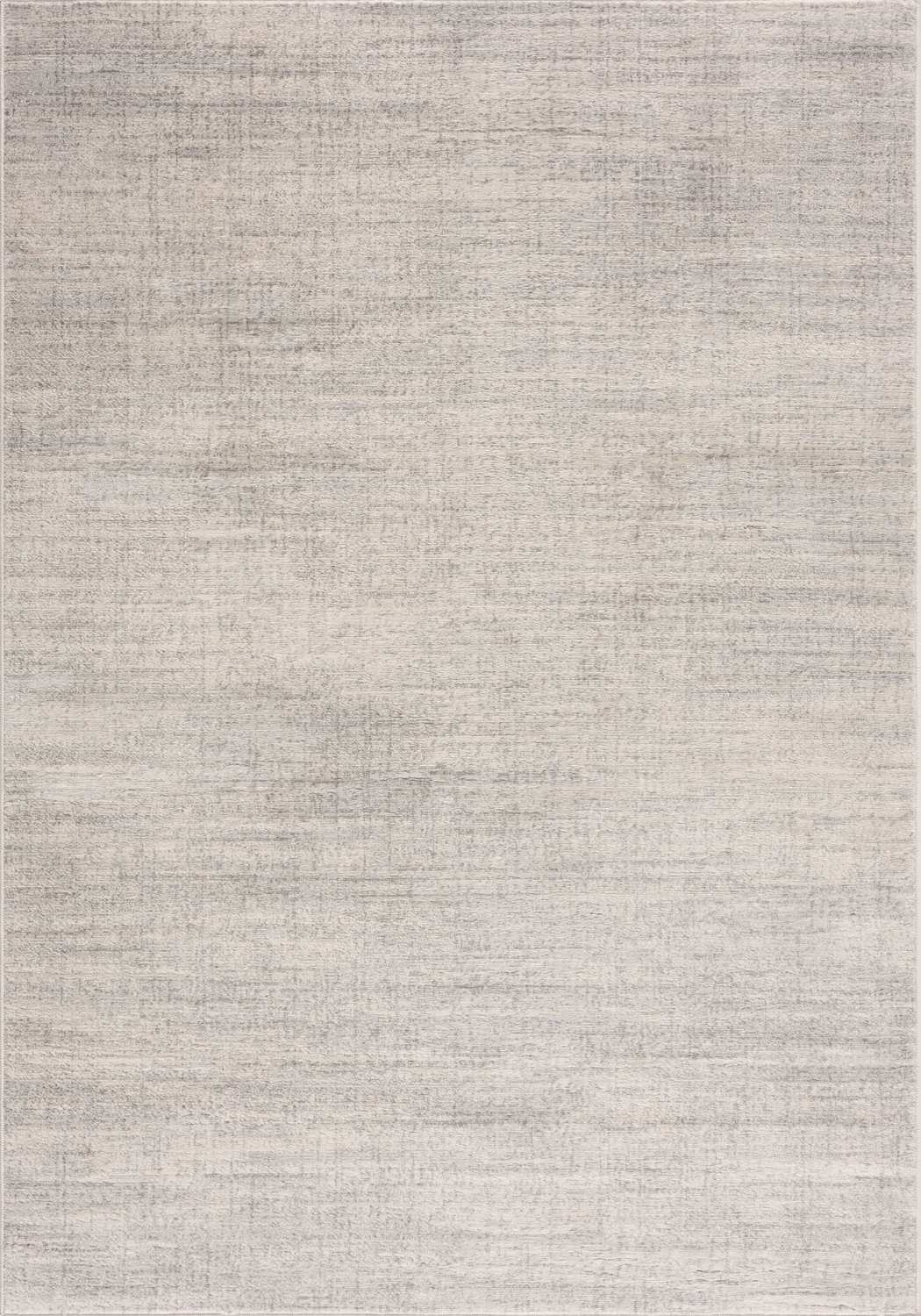
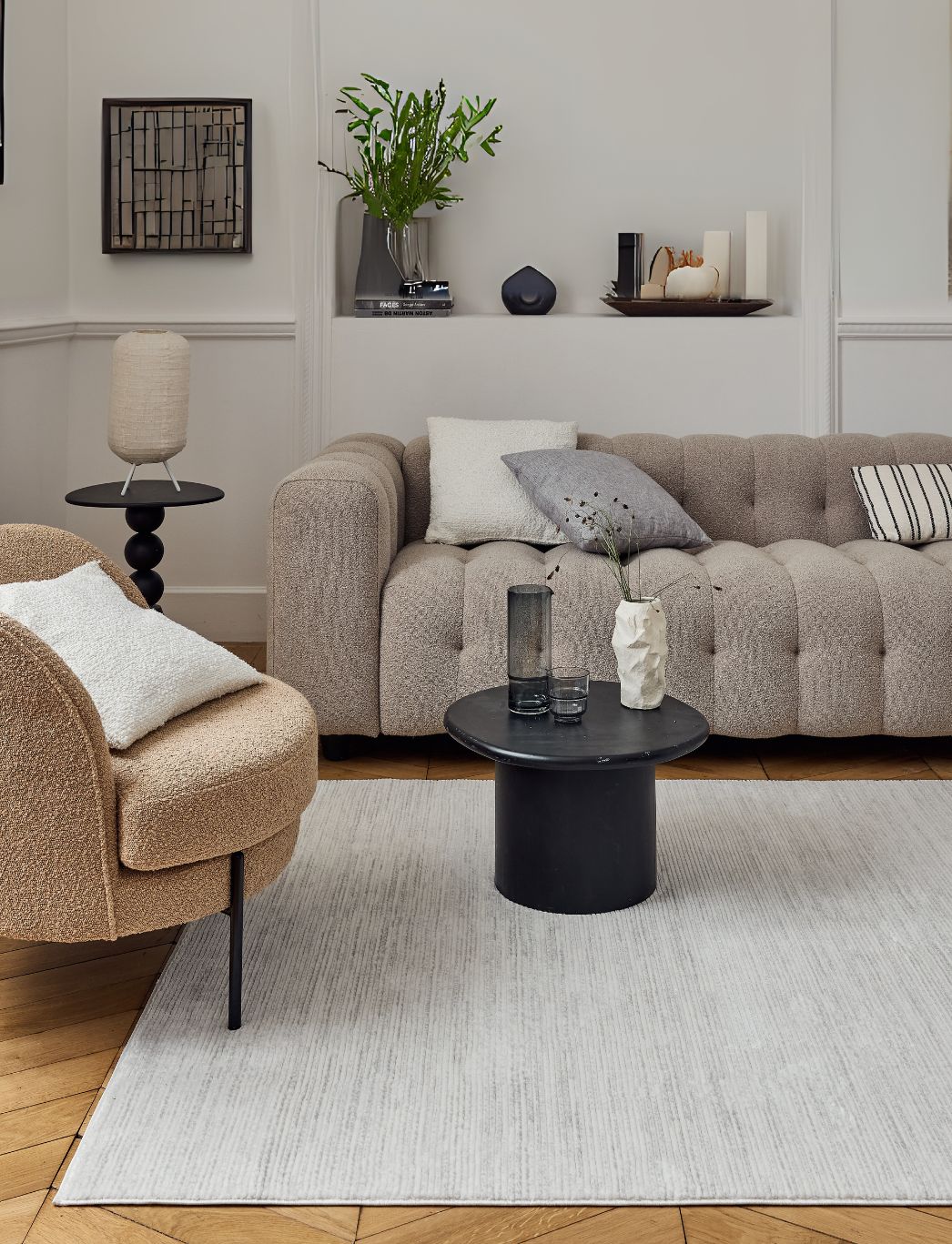
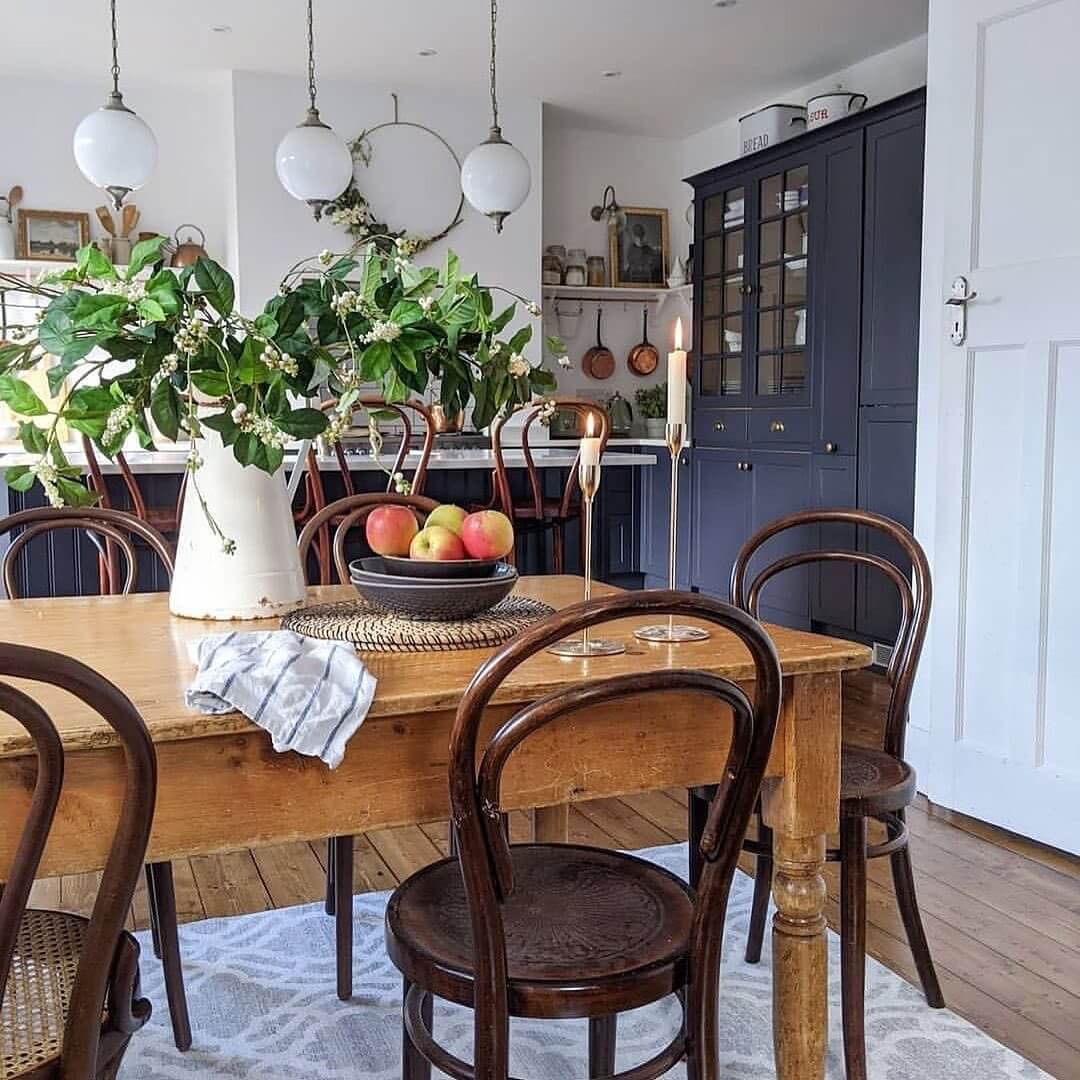
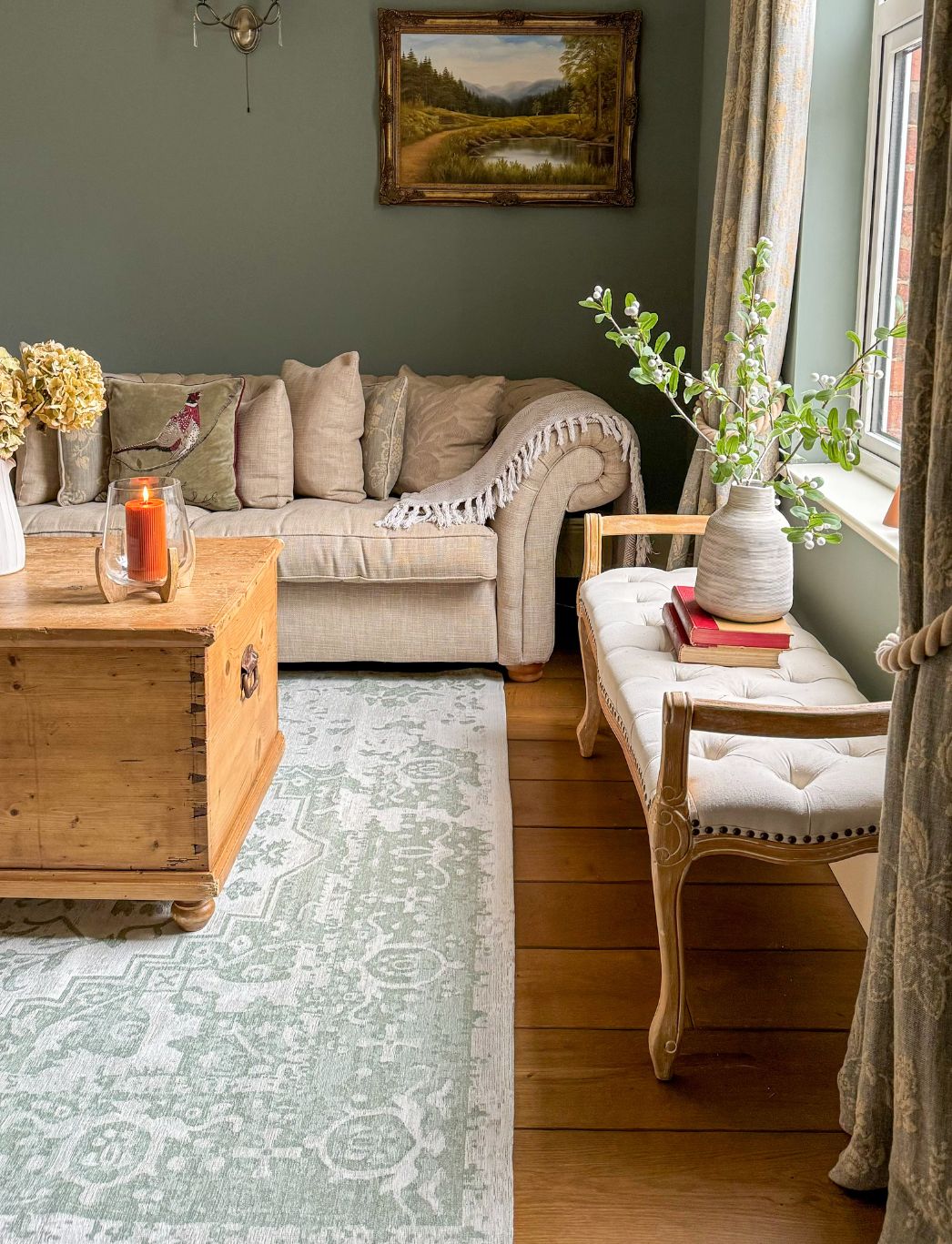
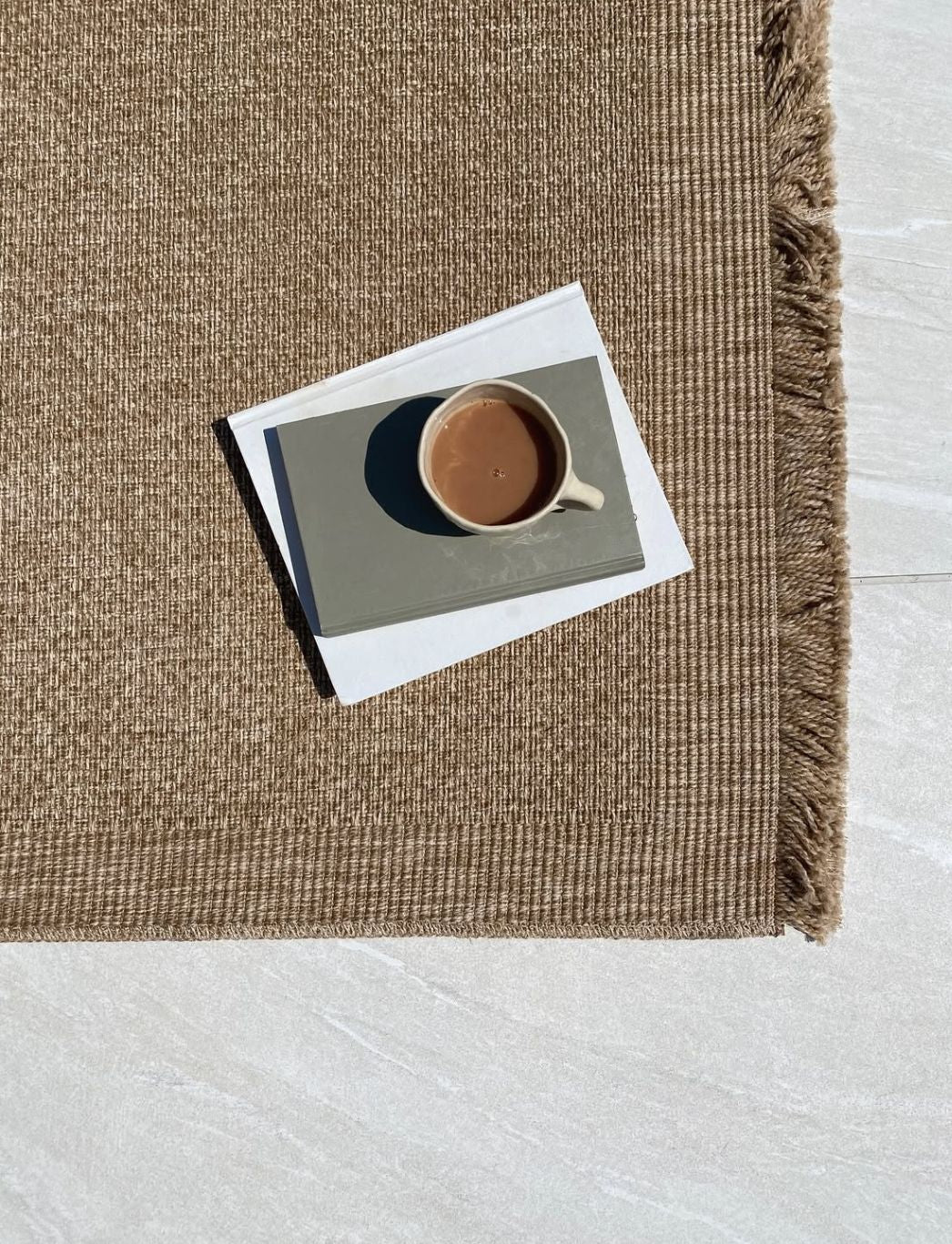
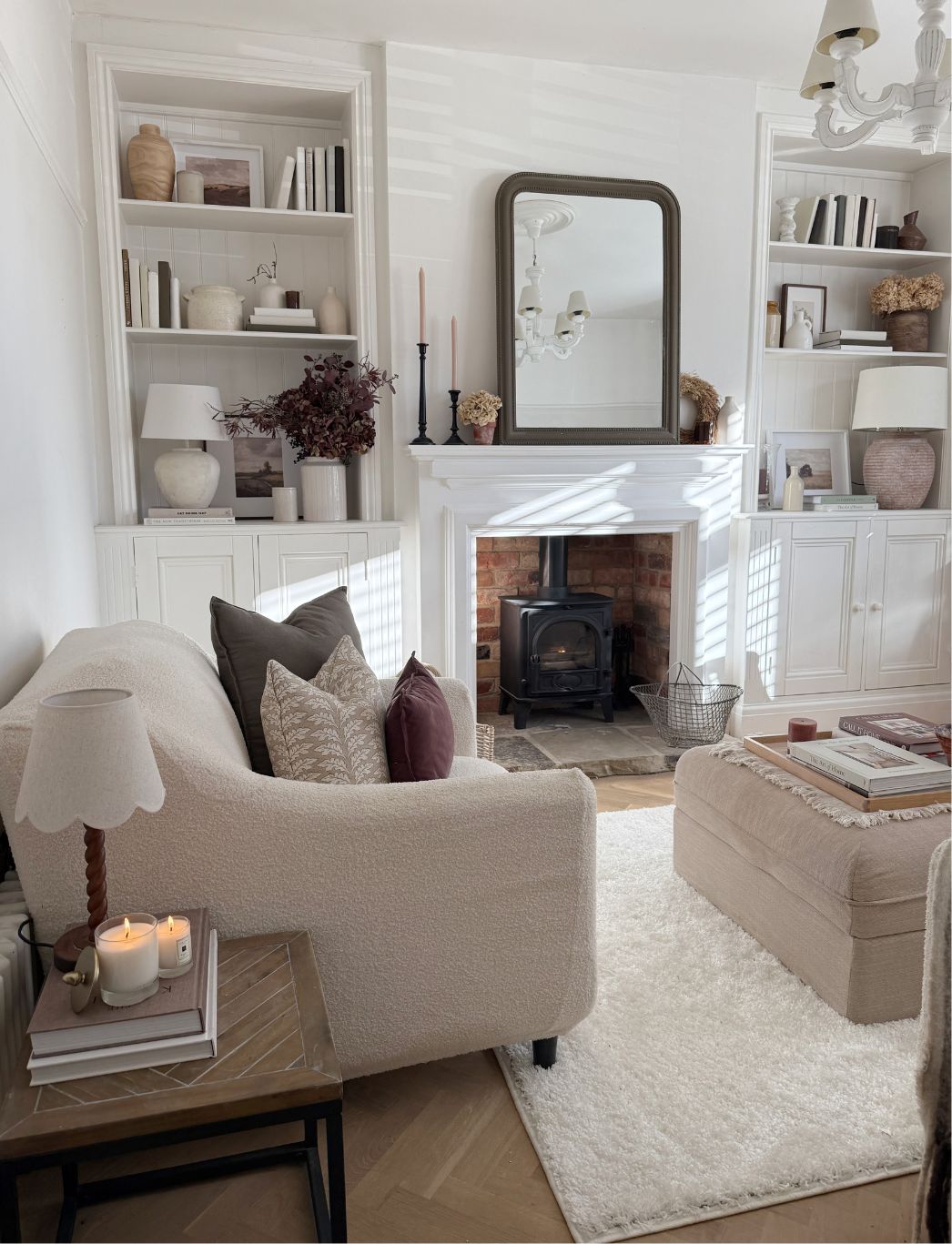
Leave a comment